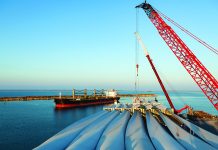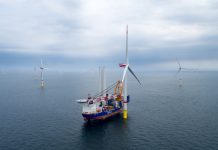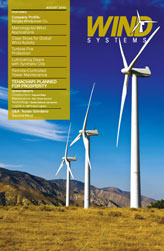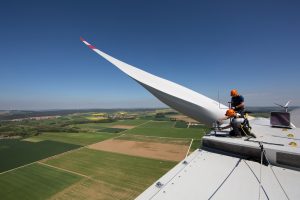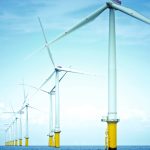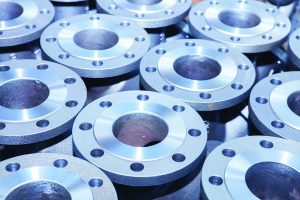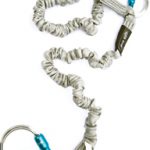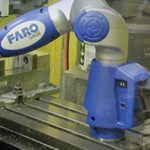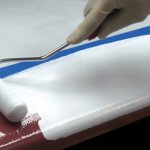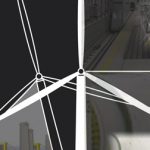After serving as assistant chief engineer at the Piper Development Center, where he designed aircraft such as the Piper Cherokee, and then working in the General Aviation Division of North American Rockwell, Karl Bergey—an aeronautical engineer with degrees from Penn State and MIT—was teaching at the University of Oklahoma in the late seventies. He’d become interested in small wind turbines, writing a number of feasibility studies, when he decided the market was ripe for entry. As luck would have it, he didn’t have to look far for a partner in this venture.
“I was working on my degree in mechanical engineering at Oklahoma at the time,” according to Mike Bergey, president, “and my research involved some really interesting designs for small wind turbines. My father told me that he was growing increasingly interested in the field, so we attended a couple of wind conferences and decided to go into business together.”
Known as the Bergey Windpower Co., or BWC, the father—now chairman and CEO—and son team launched the enterprise in 1977 and had its first small wind turbine on the market three years later, in 1980. “We were really part of the third iteration of a small wind movement in the States,” Bergey explains. “There had been a small wind industry in the late 1800s for pumping water on farms, and then in the twenties and thirties centering around rural electrification, and then the Arab oil embargo of the early seventies set the stage for developing new energy sources, which helped us get our company off the ground. There were federal and state incentives available at the time, too. Then, in the mid-eighties, when the price of oil fell to less than $10 per barrel, the government lost interest in supporting renewable energies and general interest waned, which really decimated the industry.”
In its early years, BWC was one of about 40 small wind turbine manufacturers, all of which went out of business, leaving the company standing alone in its field. As Bergey explains it, they had been around long enough to take the lead in the field, which definitely helped it stay afloat, but there was more to it than that. “For one thing, we had a lot of customers using our products and depending on us for service, so we just couldn’t leave them in the lurch,” he says. “But more than anything we really believed in what we were doing, and we were convinced the market would eventually turn around, even though we’d lost 92 percent of our revenue.”
In the meantime, however, generating revenue was the primary concern, and the Bergeys soon realized they would need to range beyond the United States to find work. This began a period of intensive travel to sites around the world such as Australia, Bangladesh, Chile, Mexico, Russia, and even Afghanistan. For some 15 years every week was a mad scramble to meet payroll, and the principals even went without a salary at times. “When dad and I first started the company, he’d asked me how little money I needed to live on,” Bergey recalls, “but that really wasn’t what either of us had in mind.”
Still, the company’s involvement in every conceivable small wind application—rural electrification, development aid projects, water-pumping projects for agriculture—and in an incredible variety of geographic extremes led to a depth of knowledge and expertise few other companies can rival. “We’re the third-largest small wind manufacturer in the world,” he says, “but I doubt anyone else can lay claim to the depth of firsthand experience we’ve amassed over the years.”
These days the company is prospering, with headquarters and U.S. manufacturing conducted in Norman, Oklahoma, and another assembly plant located in Beijing, China. As deeply as it has penetrated the small-wind market from a geographic standpoint, it has also played a central role in supporting the industry itself. A member of the American Wind Energy Association since 1978, Mike Bergey has twice served as its president, and also as chair of its Small Wind Certification Standards Committee. “The small wind certification standard we developed has been adopted in the UK, as well,” he says. “We’re giving consumers independently verified performance specifications for the first time. It’s the equivalent of the EPA’s estimated gas mileage for cars, and it’s really going to drive quality and value in the industry.”
As to the central reason for the success of BWC’s products, it all has to do with simplicity. “The fewer moving parts you have, the less chance there is for equipment failure,” Bergey says, “and you’ll now find that most small wind turbines are designed along similar lines. My father has always quoted Antoine de Saint-Exupery in saying that ‘a designer knows he has achieved perfection not when there is nothing left to add, but when there is nothing left to take away,’ and that’s remained a central philosophy for us. And while the energy business has always been cyclical, this is the best business environment that we’ve seen for small wind in our 33 years, so we’re prepared to continue applying the expertise we’ve developed to creating intelligent, trouble-free designs to the benefit of our clients here in North America and around the world.”
To learn more:
Call (405) 364-4212, e-mail sales@bergey.com, or go to www.bergey.com.

















